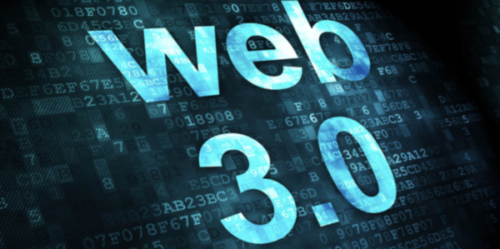
What are Crypto Futures?
Crypto futures is a trading instrument that allows individuals to speculate on a cryptocurrency’s price. A person trading in crypto can choose to buy crypto at a low price and sell at a high price or can sell crypto at a high price and buy it at a low price. (the article covers the process in ‘How to trade crypto futures?)
Let’s Understand Long and Short Selling in Crypto Futures Trading.
Suppose that Bitcoin’s current trading price is $22,300 and you believe that Bitcoin will reach $23500. So, you take a BTC long position at market price or limit price with USDT as the margin.
Typically, traders prefer to trade in USDT margin pairs as it is easy to calculate the PnL of the trade. (PS: PnL means Profit and Loss) Once the cryptocurrency reaches the desired price mark the trader simply sells the crypto assets and receives the margin + profits in the futures wallet.
Now that we know what a long position means in crypto futures let’s understand how shorting works in futures. Let’s say BTC is trading at $24,000 and you speculate its price to go down by $200 to $300. So you sell BTC at 24k and later buy it at $23,500 or a little less if luck is in your favor. This squares off the trade.
You can choose to add stop loss and take profit to make sure you don’t miss an earning opportunity and also minimize liquidation risk.
Terms you Must Know Before Getting Into Crypto Futures Trading
Crypto Futures Pair: A crypto futures trading pair comprises crypto that traders choose to speculate on and the margin currency that is used to buy the crypto For example BTC-USDT. Here the margin used is United State Dollar Tether (USDT) and BTC is the asset that a trader speculates on.
Filled: The term filled defines that the futures trade position has moved from open to filled (*active) order.
Good to Date ~ GTC: This term means that the futures position is open till the expiry of the contract.
High: This is the highest price mark that a cryptocurrency has reached in futures trading.
Initial Maintenance Margin: These are the funds that you require to enter a futures trading position.
Isolated Leverage: Some crypto exchanges offer isolated leverage to help traders protect their unused funds in the futures wallet.
Leverage: This is the crypto margin that an exchange offers for traders to be able to add to their own margin to help boost the contract size and let the trader make the most of a market upside.
Liquidation Price: In a futures trade chances are that the cryptocurrency’s value can nosedive to a level that is below your margin money + leverage money. In a scenario like that the entire trade gets squared off.
Good till Cancel: This means that the futures contract position will remain active until you cancel it.
Long position: A futures position is considered as long when a trader buys a cryptocurrency at a low price. A long position is also called Buy. Similarly, traders can also enter a short position. In this, the trader sells the crypto asset at a high price and buys it at a low price to earn profits.
Margin: Margin is crypto funds required to enter a crypto futures trade/ contract.
Open: This is the average rate of a trade price that traders are entering in.
Short position: This is a futures contract where a trader sells the cryptocurrency at a high price and later buys the asset at a low price.
Stop loss: The most underrated feature of trading, Stop Loss is a feature in trading and investing that allows the system to sell the cryptocurrency if it falls below the set stop loss price. This is one of the best ways to mitigate risk in crypto trading and investing.
Scalp futures trading: This is the top crypto futures trading strategy. In these trades, the person simply enters into a contract to make a quick buck and close the trade. Scalp trading allows the trader to fully control their profits streak.
Trigger Price: When a trader opts for Take profit and enters the amount that he or she wishes to buy (long) or sell (short) the contract is triggered.
Volume: The volume of a trading pair determines the demand and supply and the volatility too.
How to Trade Crypto Futures?
Well, here comes the fun part. How to start futures trading? Well, let’s understand the UI of a futures dashboard before we dig into the process.
As you can see in the image above. The header is the menu to check out all offerings of MEXC. Below that, the price chart determines the overall performance of the trading pair. And most important, the corner right frame is the order entry panel.
The image above is the trading activity panel that tracks all present, past, and future trades.
Now that we have understood the futures trading dashboard, let’s jump into the process of crypto futures trading. To trade in crypto futures you must fund your exchange’s wallet with USDT. Unlike traditional futures trading, you can start with a small lot and trade in futures. If you are new to crypto futures trading it’s best to start with a small amount. You can start with 10 USDT which is equivalent to $10.
Next, when your account is funded all you need to do is click on Trade and choose COIN-M as we are trading with a USDT margin. Next up, choose from a comprehensive list of trading pairs and study the price chart before entering the specifics of the futures trade.
If the pair seems to have a good volume and very low to medium volatility then you must choose the asset pair and add the specifics of the trade like margin, leverage, and most important isolated or cross trade.
If you are new to this it’s best to choose isolated to ensure you put very little at risk. Additionally, it’s best to add stop loss and take a profit. Track your trade’s performance and if you see that the trade is not going great or there could be a huge dip, you can also reduce the margin from the trade. Of course, this move will change the liquidation price.
How to Make Profits in Crypto Futures Trading?
Essentially, crypto future trading can be anyone’s passive income but it takes time to master. To increase your potential chances of making a profit from futures trading it is pertinent that you have a strategy in place.
One of the best ways to make a profit is scalp trading. In scalp trading, traders take a position (long/short) and book profits when there are small movements in the price. Traders repeat this process so that the overall profit from trading is significant.
One of the most underrated principles in futures trading is not booking a loss and keeping the position open till the time the entire margin isn’t washed out. It’s important to nip this in the bud at the beginning instead of taking a huge loss.
When trading in crypto futures it is important to understand the liquidation mark. With more leverage comes more risk. Hence, it is important to modify the leverage from minute to minute so that your risk is under check and you can choose the right moment to exit the trade.
If you are comfortable in taking long positions in the future but want to explore shorting, start with a small amount and trade. Also, if you analyze your trades and make A note of Your mistakes, what went well in the trade, and the opportunities you may have missed.
9 Tips for a Seamless Crypto Futures Trading Experience
- Choose an exchange that charges a low trading fee. There are many exchanges that charge a maker and taker fee. This will have a slight impact on the overall trade. In addition to the trading fee, check out the trading pairs that the exchange offers. Quality tokens tend to have more volume, so pick your exchange only after you have understood these nuances.
- We often hear a popular opinion that you must not trade/ invest emotionally. Often misunderstood by many, this piece of advice directs to the fact that one can get greedy or fear losing their money. Hence, it is important to trade with a calm mind. Additionally, this also means that if you are feeling low or are over excited then chances are that you may not trade to the best of your ability.
- When trading futures it is really important to make sure that your internet connection is stable and your devices are charged. Any delay in fetching the dashboard of the future could potentially put your trade at risk. To make sure you have better control of your trades you can keep your trading session open on your phone. This way if you are moving around anywhere and an opportunity knocks, you can exit the trade immediately without having to go back to your system.
- Do not enter into multiple futures positions if you are new to this whole instrument. Once you have mastered the art of futures trading you can take multiple positions.
- Always make sure to keep a tab on the moving averages or prices of cryptocurrencies so you can make a better judgment of the market conditions.
- Make sure to double-check the price of any cryptocurrency that you plan to invest in or trade with. At times, Google may not fetch you the correct price of crypto. So it’s best to check CoinMarketCap or Tradingview.
- If you plan to trade in futures more often then make sure that your account has some USDT margin so you don’t have to spend time rummaging through different steps to invest in USDT. You can also choose to store USDT on your crypto cold wallet or if you have a hardware wallet like Ledger even that would do just fine.
- A word of caution here, do not blindly fall for Telegram groups that send price movement predictions and signals. Stick to your trading strategy and learn from your investing/ trading mistakes. Most successful investors and traders learn from their mistakes. This means it is crucial to be honest about your trading strategy and once you admit it half the battle is won.
- Top crypto exchanges offer a demo futures trade for users who are new to crypto futures. If futures is absolutely new to you then I would recommend taking the demo and understanding how it works.
The most important tip for trading in futures is to keep your confidence level in check. Either a person loses his or her full confidence if they make a loss or gets overconfident if they make a profit. Losing and gaining is a part and parcel of investment and trades, so don’t lose faith in yourself and at the same time please do not be reckless with futures.
Wrapping Up
Crypto futures trading may seem really intimidating but it is not. With the right strategy and risk management understanding you can learn and earn by trading in crypto futures. Trading in futures can be risky so ensure you take all precautionary measures.
Happy Trading!
Personal Note From MEXC Team
Check out our MEXC trading page and find out what we have to offer! You can learn more about crypto industry news. There are also a ton of interesting articles to get you up to speed with the crypto world. Lastly, join our MEXC Creators project and share your opinion about everything crypto! Happy trading!
Join MEXC and Start Trading Today!



